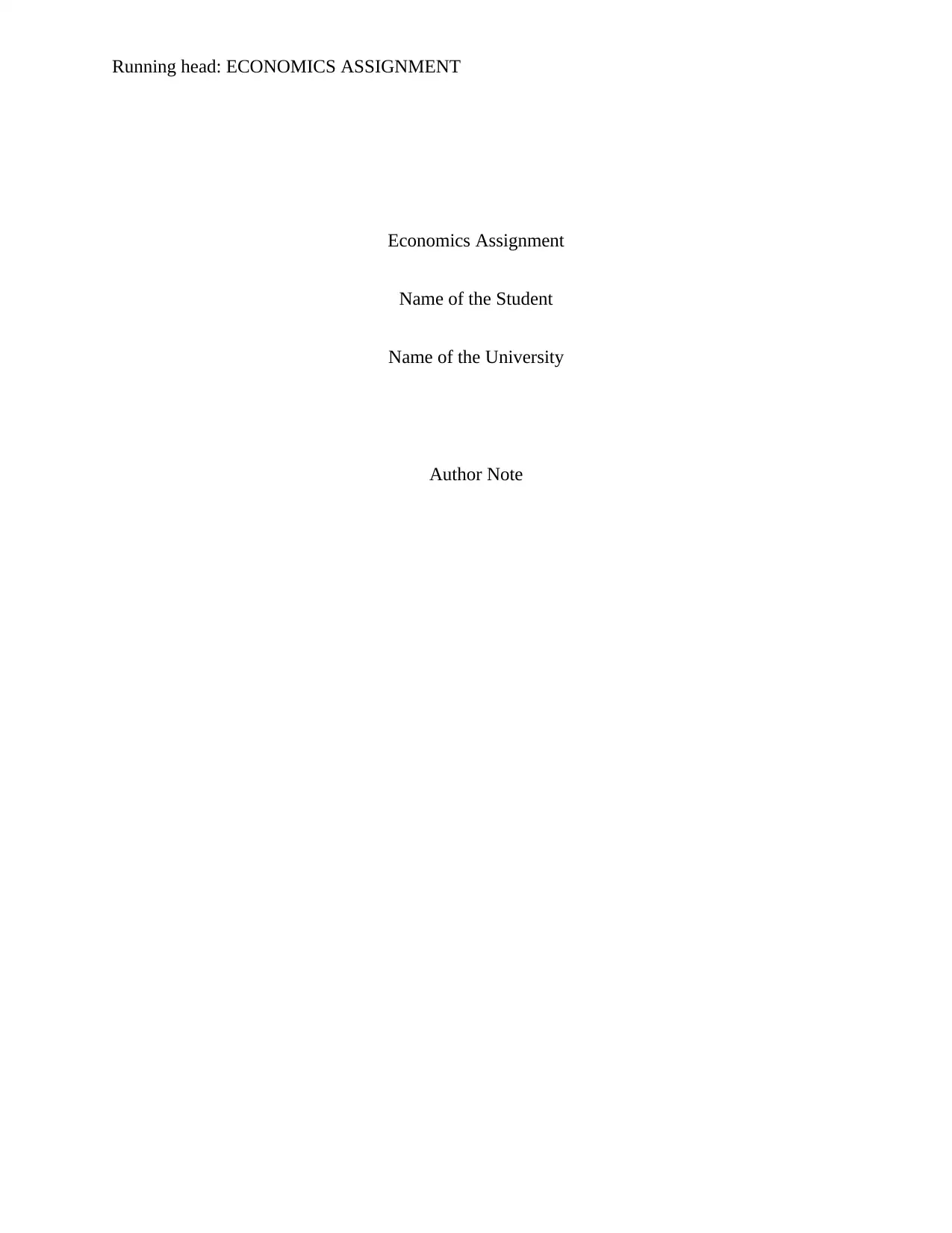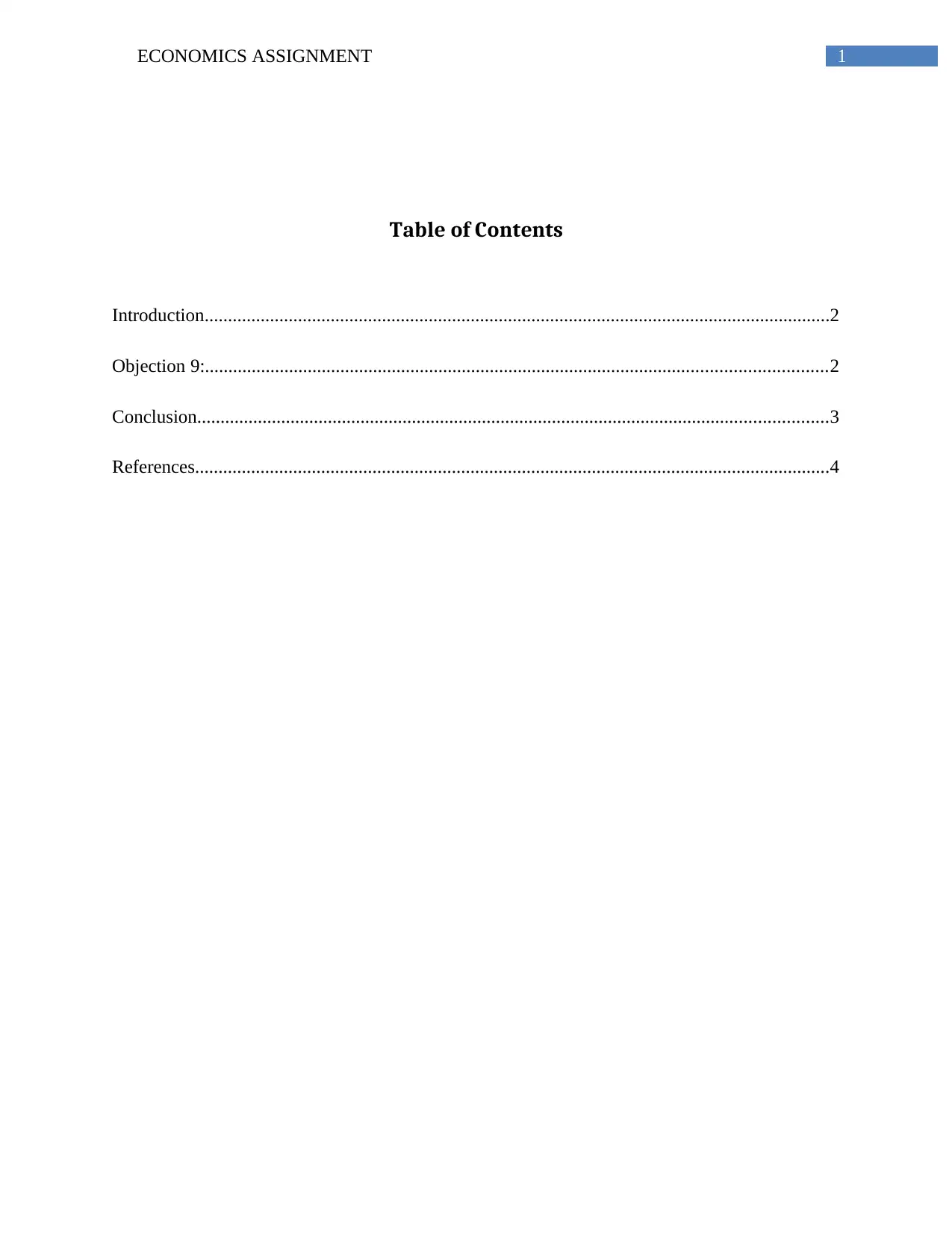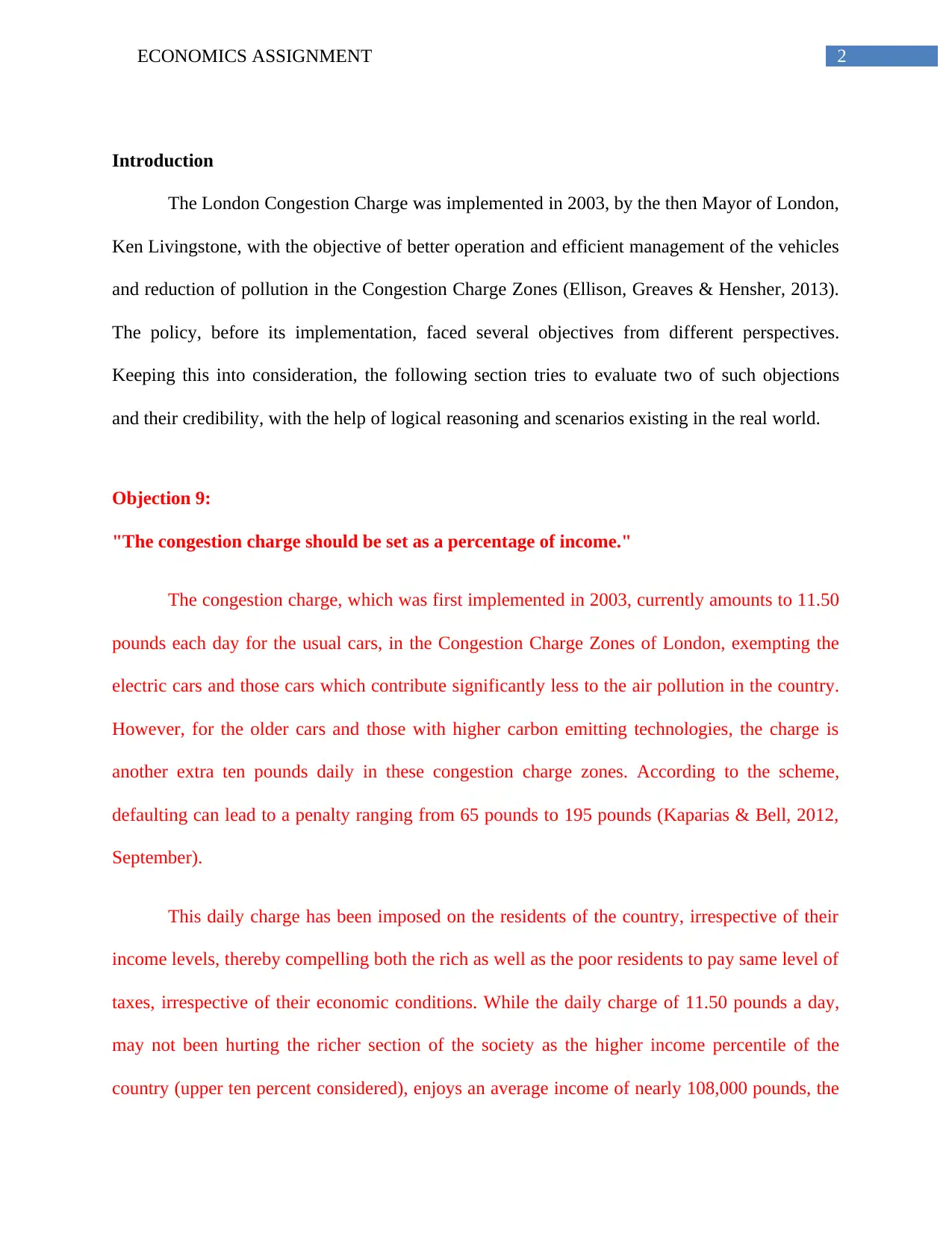Economics Assignment: Evaluating London Congestion Charge Objections
VerifiedAdded on 2021/04/17
|5
|721
|169
Essay
AI Summary
This economics assignment analyzes the London Congestion Charge implemented in 2003 to manage vehicles and reduce pollution. The assignment focuses on an objection regarding the flat congestion charge irrespective of income levels. It argues that the charge disproportionately affects lower-income groups compared to higher-income earners. The paper suggests that a progressive tax structure, where charges are based on income percentage, would promote greater welfare and equality. The assignment supports this objection, asserting that policies addressing income-based concerns could improve the charging system's implementation and acceptance. The analysis includes references to relevant research papers and economic principles, providing a comprehensive evaluation of the London Congestion Charge's impact and potential improvements.
1 out of 5








![[object Object]](/_next/static/media/star-bottom.7253800d.svg)